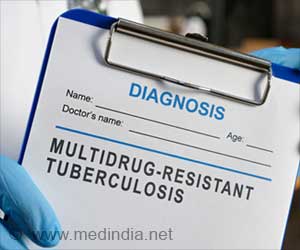Tuberculosis screening will help improve public health according to cancer experts.
Tuberculosis screening will help improve public health according to cancer experts.
The research will be presented at the American Thoracic Society's 105th International Conference on Tuesday, May 19."Screening for LTBI [latent tuberculosis infection] is an important method for eliminating the diseases," says lead researcher Benjamin Linas, M.D., M.P.H., of Massachusetts General Hospital. "This analysis, does not suggest we reduce screening. Indeed, if we did that, we'd likely take a step backward in TB control. The study does suggest, though, that we redirect and focus our screening efforts on those most at risk." Among patients with chronic medical conditions, the NNS to prevent an active case of TB ranged from 1,150 for those who are underweight to 2,778 for patients with end-stage renal disease. Previous estimates of the NNS ranged from 806 to 1,923. Screening was not cost-effective for many patients who are currently recommended for screening, including those who are underweight, have had a gastrectomy, or have silicosis, diabetes or end stage renal disease. Screening was a cost-effective strategy under previous estimates of the rate of reactivation TB, but the new, lower estimates of reactivation limited the case finding rate and decreased the cost effectiveness of screening. The NNS was lower in populations with a high prevalence of latent TB infection, including foreign-born residents, recent immigrants, the homeless and injection drug users. It was also lower in patients with a high risk of reactivation TB, including those with HIV infection and those taking immunosuppressive medications. As a result, screening remained cost effective for these groups.Dr. Linas and his colleagues, from MGH and Boston University School of Public Health, based their analysis on several new estimates of TB reactivation rates gathered from 1998-2005. According to Dr. Linas, current guidelines for screening are based on rates indicated from studies conducted in the 1950s and 1960s.To arrive at new estimates of NNS and cost effectiveness, the Boston-based researchers constructed a Markov computer model that simulates the clinical progression of a cohort of patients, can integrate a wide array of parameters and allows the analysts to plug in different estimates to determine which are most important in determining outcomes. In addition to the old and new estimates of reactivation rates, the group included in their model estimates based on published reports of TB mortality, percent of diagnosed patients who complete isoniazid (INH), the standard therapy for LTBI (for U.S.-born residents, 50 percent; for foreign-born, 48 percent) and the effectiveness of the therapy among those who complete it. "The take home message of this research," Dr. Linas said, "is not that we should reduce funding for LTBI screening, but that we can use current funding to make greater strides toward eliminating TB by targeting those at highest risk for latent infection becoming active."Source-Eurekalert
SAV











